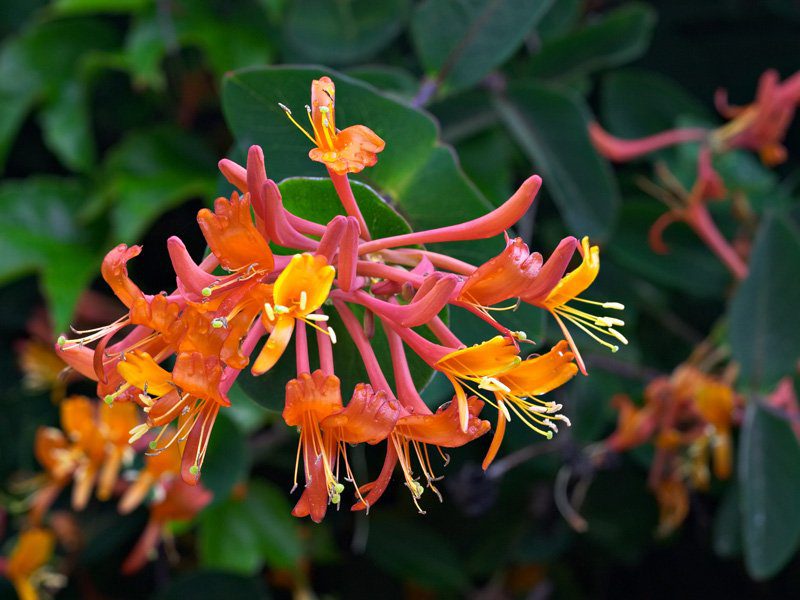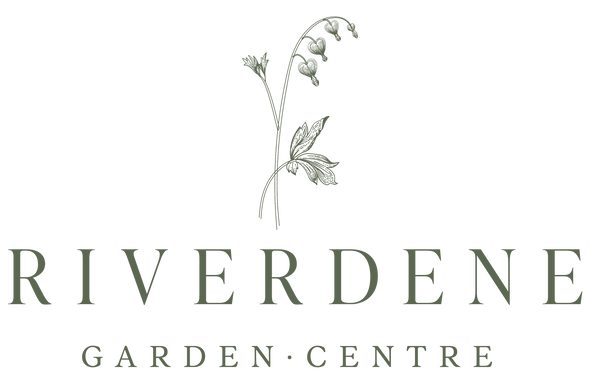Riverdene Garden Center
Mandarin Honeysuckle
Mandarin Honeysuckle
Couldn't load pickup availability
Lonicera ‘Mandarin’
Mandarin Honeysuckle is a cold-hardy, deciduous climbing vine known for its stunning bright orange-red tubular flowers with yellow interiors that bloom from late spring through summer. It is a vigorous, non-invasive, low-maintenance vine that attracts hummingbirds, butterflies, and other pollinators. This showy honeysuckle is ideal for fences, trellises, arbors, and pergolas in Southwest Saskatchewan.
Planting & Location
- Hardiness Zone: 3-7 (very winter-hardy, suitable for prairie climates)
-
Mature Size:
- Height: 10-15 feet tall (climbing with support)
- Spread: 3-6 feet wide
- Growth Rate: Fast (1-2 feet per year)
- Sunlight Needs: Full sun to partial shade (best flowering in 6+ hours of direct sun)
-
Soil Preference:
- Prefers well-drained, loamy soil.
- Tolerates clay, sandy, and slightly alkaline soils.
- Avoid overly wet or compacted soil, as honeysuckle prefers good drainage.
- Spacing: 3-6 feet apart for multiple vines.
Watering
- Young Plants (First Year): Water deeply 1-2 times per week to establish roots.
- Established Vines: Drought-tolerant but benefits from deep watering every 7-10 days in dry periods.
- Avoid Overwatering: Prefers moderate soil moisture but does not tolerate standing water.
Fertilizing
- First Year: No fertilizer needed—focus on root establishment.
-
Mature Vines:
- Apply a balanced slow-release fertilizer (e.g., 10-10-10) in early spring to encourage strong growth and flowering.
- Organic alternative: Compost or well-rotted manure in spring.
Pruning & Maintenance
- Best Time to Prune: Late winter to early spring, before new growth starts.
-
How to Prune:
- Remove dead, damaged, or weak branches to promote healthy growth.
- Trim lightly after flowering to maintain shape and control size.
- Older plants can be rejuvenated by cutting back one-third of the oldest stems every 3-4 years.
Flowers, Foliage & Seasonal Interest
- Bloom Time: Late spring to early summer (May-July), with some reblooming possible
- Flower Color: Bright orange-red tubular flowers with yellow interiors
- Fragrance: Mild to none (not as fragrant as other honeysuckles, but showier blooms)
-
Foliage:
- Spring & Summer: Dark green, oval leaves
- Fall: Leaves take on a slight golden hue before dropping
Pest & Disease Management
Resistant to: Drought, deer, urban pollution, and most pests
Common Pests:
-
Aphids – May cause curling leaves and sticky honeydew.
- Solution: Spray with insecticidal soap or introduce ladybugs.
-
Spider Mites – Can cause leaf discoloration in hot, dry conditions.
- Solution: Hose off with water or use insecticidal soap.
Common Diseases:
-
Powdery Mildew – White fungal coating on leaves in humid conditions.
- Solution: Improve airflow and apply fungicide if needed.
-
Leaf Spot (Fungal or Bacterial) – Brown spots on foliage.
- Solution: Avoid overhead watering and remove infected leaves.
Winter Protection
- Highly winter-hardy—no special protection needed in Zone 3-7.
- Mulching: Apply 2-4 inches of mulch around the base (not touching the stems) to insulate roots.
- Rodent & Deer Protection: Generally resistant to deer, but rabbits may nibble young stems in early spring.
Landscape Uses
Perfect for fences, trellises, pergolas, and arbors
Bright orange-red flowers provide a striking visual impact
Attracts hummingbirds, butterflies, and pollinators
Low-maintenance and non-invasive
Works well in both modern and cottage-style gardens
Additional Notes:
- Mandarin Honeysuckle is one of the most vibrant cold-hardy honeysuckles, offering long-lasting blooms and fast vertical growth.
- Lifespan: 20+ years with proper care.
- Non-invasive – Unlike Japanese honeysuckle, this variety will not aggressively spread.
- Works well as a climbing vine, container-grown vine, or trained along fences for a natural privacy screen.
Photo courtesy of Jeffries Nurseries
Share


